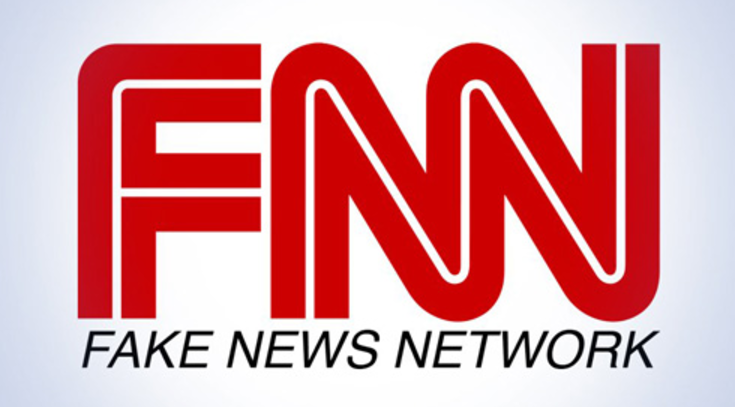
(Article by Adam Johnson, republished from Fair.org)
The obvious implication was that an elaborate Russian psyop had fooled the public into voting for Trump based on a torrent of misleading and false information posing as news. Everyone from Bloomberg’s Sahil Kupar to CNN’s to Robert Reich to Anne Navarro to MSNBC’s Joy Ann Reid tweeted out the story in breathless tones. Center for American Progress and Clinton advocate Neera Tanden even did her best Ron Paul YouTube commenter impression, exclaiming, “Wake up people.”
But the story didn’t stand up to the most basic scrutiny. Follow-up reporting cast major doubt on the Washington Post’s core claims and underlying logic, the two primary complaints being 1) the “research group” responsible for the meat of the story, PropOrNot, is an anonymous group of partisans (if more than one person is involved) who tweet like high schoolers, and 2) the list of supposed Russian media assets, because its criteria for Russian “fake news” encompasses “useful idiots,” includes entirely well-within-the-mainstream progressive and libertarian websites such as Truth-Out, Consortium News, TruthDig and Antiwar.com (several of whom are now considering lawsuits against PropOrNot for libel).
PropOrNot says their criteria for “Russian propaganda” is “behavioral” and “motivation-agnostic,” so even those who publish views that simply coincide with the Russian government’s, regardless of intent or actual links to Russia, are per se Kremlin assets—an absurd metric that casts a net so wide as to render the concept meaningless.
Glenn Greenwald and Ben Norton of The Intercept (11/26/16) called PropOrNot “amateur peddlers of primitive, shallow propagandistic clichés” who were “engaging in extremely dubious McCarthyite tactics about a wide range of critics and dissenters.” Fortune magazine’s Matthew Ingram (11/25/16) insisted the report had the “beginnings of a conspiracy theory, rather than a scientific analysis,” while AlterNet’s Max Blumenthal (11/26/16) lamented that “insiders have latched onto a McCarthyite campaign that calls for government investigations of a wide array of alternative media outlets.”
As Matt Taibbi wrote in Rolling Stone (11/28/16):
The vast majority of reporters would have needed to see something a lot more concrete than a half-assed theoretical paper from such a dicey source before denouncing 200 news organizations as traitors.
Almost everyone outside of the Washington Post who critically examined the list concluded it was at best shoddy and ill-considered, and at worst a deliberate attempt to encourage a chilling effect on Russia-related reporting. That a group of Cold Warrior hacks would publish such a blacklist is not a surprise; that one of the most established names in American news would uncritically parrot it was. Its reporting, writing-up and referencing is a prime example of how fake real news on real fake news spreads without question.
USA Today (11/25/16), Gizmodo (11/25/16), PBS (11/25/16), The Daily Beast (11/25/16), Slate (11/25/16), AP (11/25/16) The Verge (11/25/16) and NPR (11/25/16) all uncritically wrote up the Post’s most incendiary claims with little or minimal pushback. Gizmodo was so giddy its original headline had to be changed from “Research Confirms That Russia Played a Major Role in Spreading Fake News” to “Research Suggests That Russia Played a Major Role in Spreading Fake News,” presumably after some polite commenters pointed out that the research “confirmed” nothing of the sort.
“Um ‘stories planted or promoted by the Russian disinformation campaign were viewed 213 million times,’” New York Times deputy Washington editor Jonathan Weisman (11/24/16) tweeted out to the tune of 2,800 retweets. But the report didn’t show this at all. There was no methodology provided, nor was there any consideration by Weisman that that “213 million” figure of Russian “fake news” included, for example, the third-most popular news site in the United States, the Drudge Report.
Drudge not only has no funding or backing from Putin, but predates his administration by several years. But because Drudge occasionally publishes stories that make the US look bad in relation to Russia, and because PropOrNot’s “useful idiots” criterion is “motivation-agnostic,” its entire footprint has become a “Russian disinformation campaign.” Did Weisman know this? Did he care?
As reports debunking or discrediting The List came out, the story continued to spread. Joy Ann Reid (Daily Beast, 11/27/16) alluded to the PropOrNot story to bolster her claim that there was an “alarming consensus of experts” that Russia interfered in the US election by “pumping of fake news and propaganda into the country’s digital bloodstream,” despite no such consensus existing. On Monday, Business Insider (11/28/16) insisted that PropOrNot’s “methods uncover some connections that merit consideration,” while citing only two examples and ignoring all of the major objections advanced by Greenwald, Taibbi et al. Rachel Maddow’s popular blog (MSNBC, 11/28/16) added another breathless write-up hours later, repeating the catchy talking point that “it was like Russia was running a super PAC for Trump’s campaign.”
Despite respected media critics taking the report to task, the Post’s spurious claims are being cemented as conventional wisdom, all the while the writer of the story and his editor refuse to answer direct criticism or reveal who this anonymous person or persons is. What are their motives? Who are their funders? Why is “useful idiot” being propped up by a major news outlet as a useful distinction? Why weren’t those on the blacklist asked to comment? Despite numerous inquiries by The Intercept, Rolling Stone and The Nation (11/28/16), all these questions remain unanswered.
One would think reports on “fake news” would themselves be held to the highest possible editorial standards, if not out of some instinctual desire to avoid high doses of irony and cognitive dissonance, at least to shield against charges of blatant hypocrisy. But increasingly, as the moral panic surrounding “fake news” reaches fever pitch, the standards of skepticism and sourcing employed by some of our most trusted news sources have inversely sunk to tabloid levels.
Read more at: Fair.org
Please contact us for more information.























